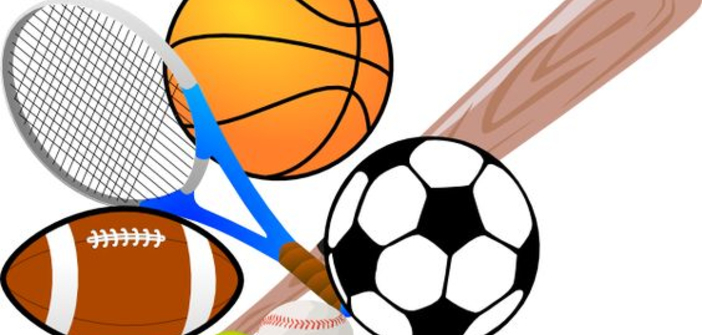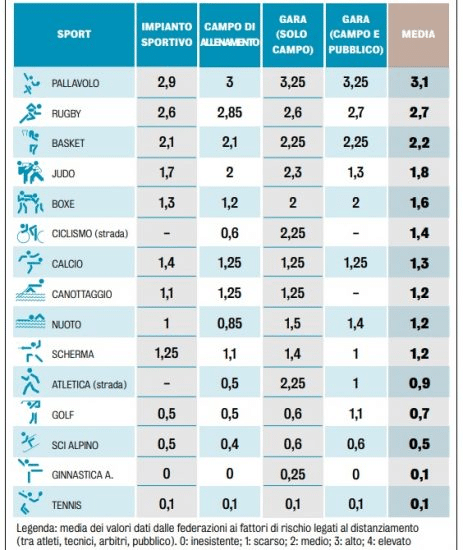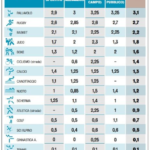The Italian Olympic Committee (CONI) asked the Polytechnic School (Politecnico) of Turin for a report on “Sports Resuming Safely” to analyze, in “scientific” terms (detailed and objective), the health risk factors, foresee the organizational conditions, and guide behaviors to make the practice of activity possible in the context of COVID-19.
The report—404 pages long—took into consideration 10 parameters applied to 387 types of sports activities.
We are publishing the table of the 15 most important sports disciplines.
Philippe Manassero (president of CDOS 06): The CONI study based on a number of practiced sports shows interesting evaluations that reassure me. The CONI table mainly shows that some sports could resume at the end of lockdown: tennis, golf, athletics, particularly running, individual canoeing and kayaking, windsurfing, paddleboarding, and I also think of equestrian sports which do not appear on the chart but are not a major problem in practice since they are individual and allow for distancing.
The French government explained to the French people that from May 11, one could walk, run, or ride a bicycle on an individual basis.
The Minister of Sports, Roxana Maracineanu, consulted heavily with the sports movement and local authorities recently. She reminded that it would be possible to practice an individual outdoor sports activity from May 11, respecting physical distancing rules in authorized open spaces and depending on the health situation of each territory (red, orange, or green zones).
Nevertheless, based on the recommendations of the High Council of Public Health, specific physical distancing between practitioners is an essential condition for practicing physical activities. These activities can be done: without time limitations, without a permit, within a distance limit of 100 km from home; limiting gatherings to a maximum of 10 people; and outdoors;
This is without benefiting from changing rooms that might be provided for outdoor activities.
The specific distancing criteria between people will be as follows: a minimum distance of 10 meters between two people for activities like cycling and jogging; sufficient physical distance for outdoor activities like tennis, yoga, fitness, for example.
Professional sports will have to adhere to the same rules.
Sports activities that do not allow for this distancing (team sports, combat sports) will not be able to resume immediately.
All these approaches are moving in the right direction for a supervised resumption of the least restrictive practices. But the most important thing remains the health of the French people. The end of the lockdown will be a determining factor to allow other practices to be authorized, I think of team sports, combat sports. But this mainly depends on exemplary and civic behavior from all the French people and a detailed analysis in June on the regression of COVID-19.
Bernard Maccario (president of CREPS Provence Alpes Côte d’Azur)
With the COVID-19 pandemic, social practices now carry risks, and sports practices are no exception; they have suffered the constraints of lockdown.
Now that a line has been drawn in all sports on the competitions that were to be held before the summer, the question arises of their resumption. Should it take place according to the same schedule for all practices, or should their specific characteristics be considered?
Commissioned by the Italian Olympic Committee, the study by the Polytechnic School of Turin contributes to this reflection. It aims to identify the risk level for each discipline concerning physical distancing (between athletes, coaches-staff, referees, spectators-public) by considering the material conditions and various modalities of the activity: training, competition without and with the public. For each criterion, the level of risk is rated on a scale from 0 (non-existent risk) to 4 (high level).
The synthesis of this study, expressed in the attached table, is likely to provoke debate. While it is not surprising to see collective sports at the forefront of the most exposed practices, it is more surprising to discover the position of volleyball.
It is at the top even though contact with opponents is prohibited. Perhaps the players’ habit of congratulating each other at the end of each exchange won was taken into account. Similarly, the position of football, which would not pose more potential risk than canoeing, can also raise questions.
Still, when considered globally, the conclusions one might draw from this study are not very far from the measures taken by the French government for the resumption of sports activities, following the Prime Minister’s announcements on April 28: to date, only outdoor activities are authorized, not requiring the use of changing rooms and respecting strict rules on distancing.
Team sports and combat sports are excluded as they cannot meet the distancing requirement.




